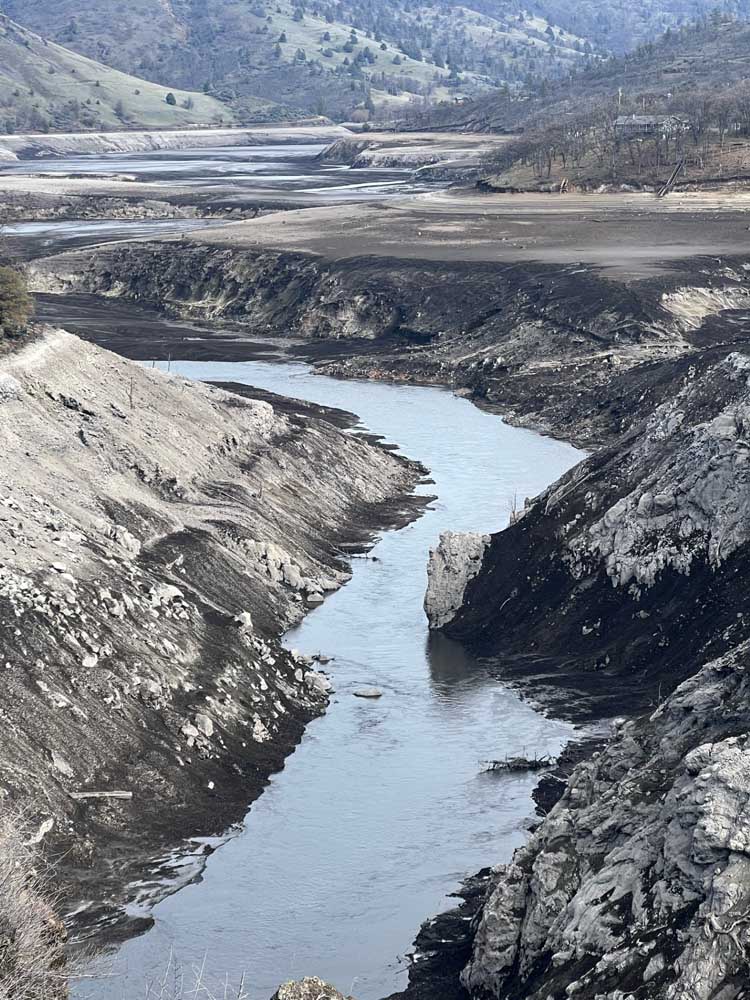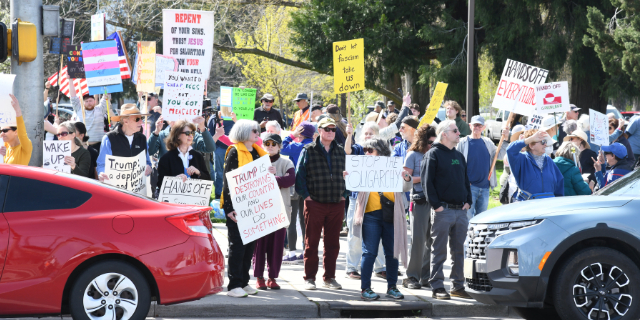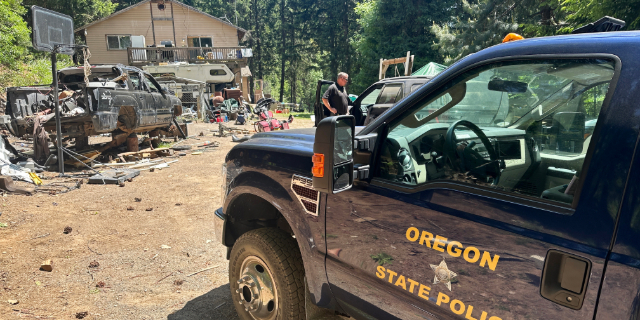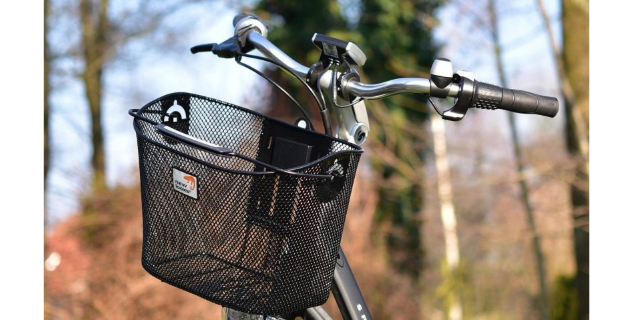Blast marks the beginning of the end for Copco No. 1 Dam
Published 10:30 am Tuesday, March 12, 2024

- The Klamath River flows through sediment that had been at the bottom the reservoir behind Copco No. 1 Dam. The lake was drained to prepare for the removal of the dam, which began Friday.
The Klamath River Renewal Corporation, which is removing four dams on the Klamath River, has teamed up with Swiftwater Films to provide dramatic images documenting the beginning of the end for Copco No. 1 Dam.
KRRC on Monday provided images from Swiftwater Films showing an initial dynamite blast taking a bite out of the top of the dam on Friday. Swiftwater, which is filming a documentary about the dam-removal project, provided additional images.
“Copco 1 dam removal officially began with a boom ahead of schedule,” Shane Anderson, principal director/producer for Swiftwater Films, said on Monday.
Photographs show flying debris during the explosion and show twisted metal along with broken concrete in a pile of rubble afterward. Other images show before and after shots, as well as shots from above showing the muddy bottom of the drained reservoir behind the dam, located in Northern California about 25 miles southeast of Ashland.
Swiftwater Films, an independent production company, has been working on the documentary since 2019, according to Anderson. In exchange for access, the company provides content to KRRC.
Swiftwater survives on donations and grants, including funding from the Redford Center, founded in 2005 by actor Robert Redford and his son, James. The Redford Center is a large sponsor for the feature film that Anderson and company are making around the project.
“It’s a once-in-a-lifetime opportunity, so I’ve been donating a lot of my time over the past few years,” said Anderson, who splits time between Ashland and Olympia, Washington.
The Swiftwater crew includes Maya Craig, the director of photography and producer; Jessie Sears, the production coordinator and stills photographer; and Jason Hartwick, a photographer also in charge of time-lapse photography.
Four dams are coming down in an effort to improve fish passage. Nearby Copco No. 2 was removed last year, to be followed by Copco No. 1, Iron Gate and JC Boyle dams this year.
The lakes behind Copco, Iron Gate and JC Boyle dams were drained as of last month to allow sediment accumulated at the bottom of the reservoirs to wash downstream. Last month, the Federal Energy Regulatory Commission OK’d deconstruction to begin on Copco No. 1. Once spring runoff has washed down the river, possibly in May, deconstruction work can begin on the other dams. Copco No. 1 Dam is concrete; the others are earthen.
“Deconstruction of the Copco No.1 Dam, which will be performed through a repetitive cycle of drilling, blasting, and chipping, can begin before the spring runoff period has concluded because it is a concrete arch dam,” according to a KRRC statement. “So, should the Klamath River experience a significant flow event this spring, water could safely pass over the partially removed concrete dam and the dam would remain securely in place.”
The Klamath River now snakes through the beds of the drained lakes, reclaiming its old channel. The beds will be reseeded and replanted, a process already underway.
Copco 1 is a hydroelectric dam built in 1918, but it blocked passage for migrating fish, as did the other dams. PacifiCorp, the former owner of the dams, gave them up rather than pursue relicensing and the associated cost of providing fish passage.
Copco 2 was built in 1925, JC Boyle was built in 1958 and Iron Gate was built in 1962. All are hydroelectric.
The removal of the dams and completion of related work is funded with $200 million contributed by PacifiCorp, plus $250 million contributed by the state of California.
As a result of the drawdown, an estimated 5.5 million cubic yards or more of silt, clay and sand will have been released as a result of the entire four-dam project. It’s expected to be washed out to the Pacific Ocean shortly after being eroded, although coarse material might take longer and might settle in some locations. Sediment concentrations suspended in the river might be higher than normal for up to two years.






